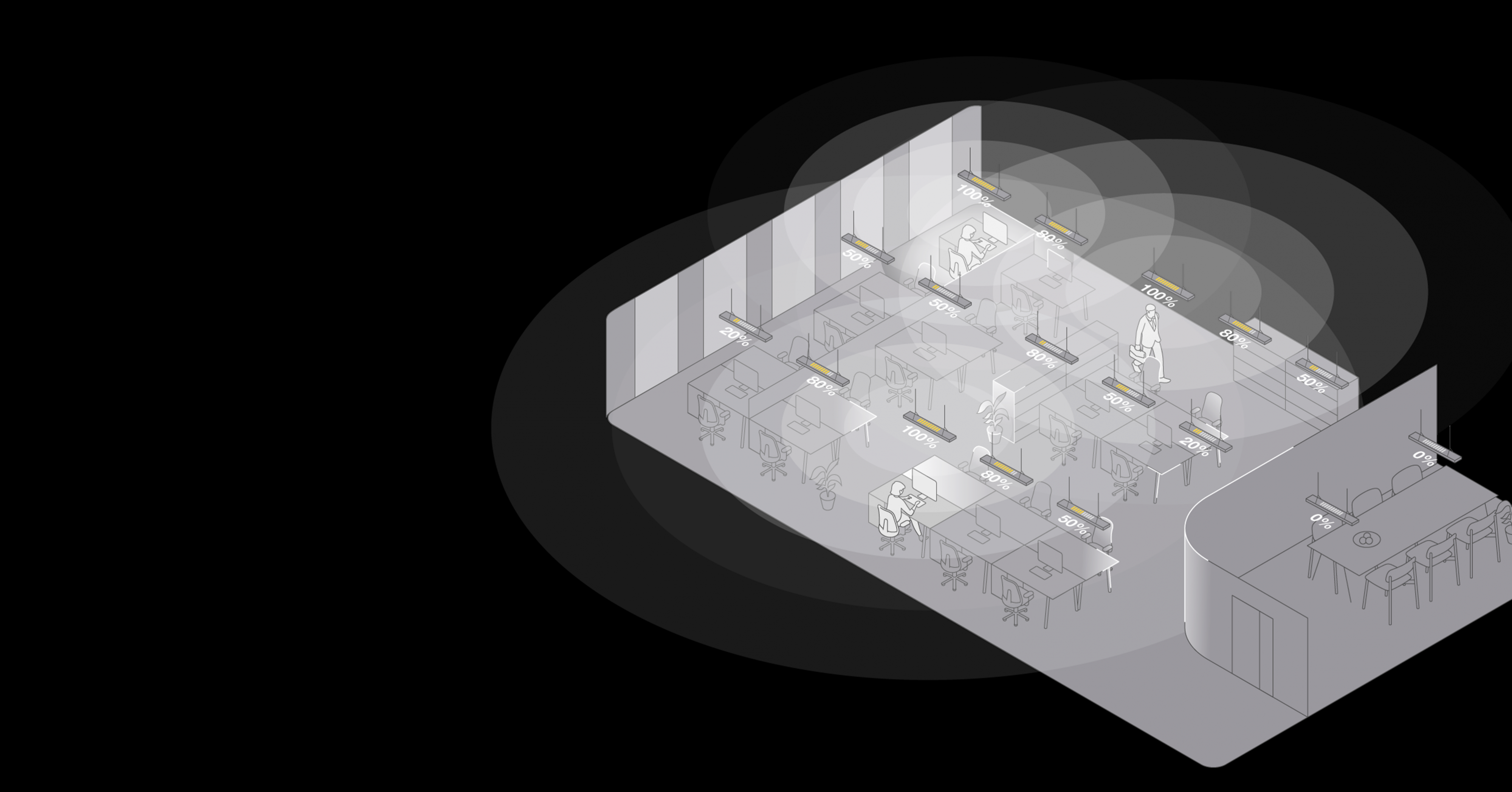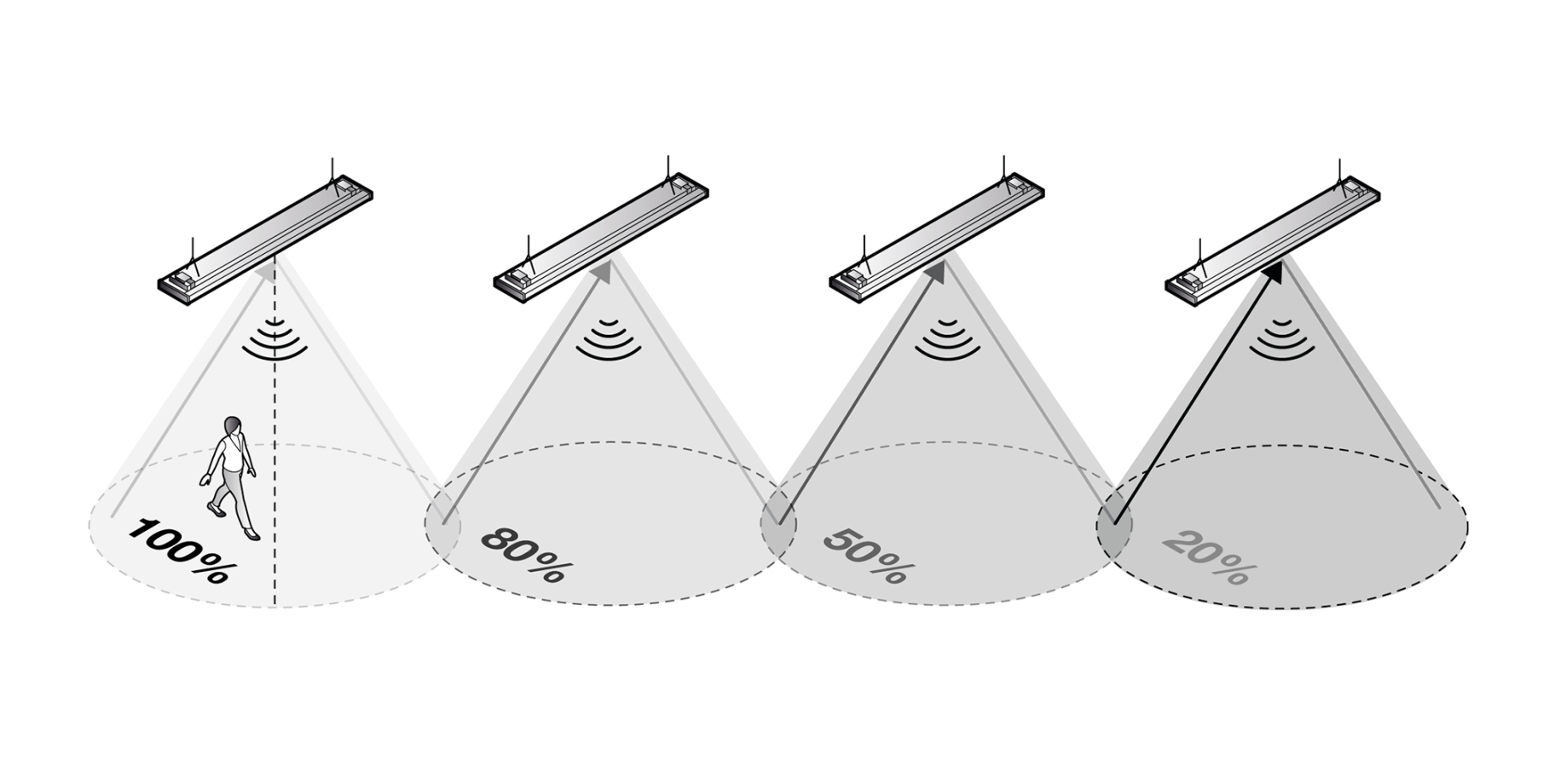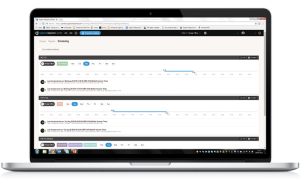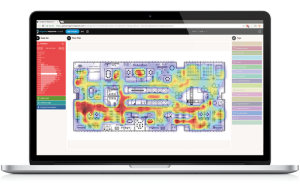

Whatever your role, whatever sector you work in, Organic Response® has features that will benefit all.
The use of intelligent wireless controls allows for a highly flexible and scalable system, enabling integration into wider building management systems and the ability to re-configure the lighting functionality to suit the usage of the building without costly and time consuming external commissioning.

Organic Response® is immediately accessible through a simple smartphone Response App
Tier 1: Instant functionality with no need for expert commissioning services - it just works!
Tier 2: Optimisation to increase energy savings and improve occupancy comfort through functionalities such as adjusting light levels and dwell times, activating daylight dimming controls, or selecting preset light "Personalities".
Tier 3: Configuration to customise lighting behaviour for even more flexibility, creating independent and dependent zones, or creating customised scenes, for example, in meeting rooms and for presentations.

An upgrade to Tier 4 uses IoT cloud-based technology to future-proof your building, enhancing the end user's understanding of the changing environment and needs of the occupants.
Automatic emergency testing: Emergency testing and reporting to deliver building compliance.
Data harvesting: Extract and analyse building data such as energy consumption and occupancy patterns and luminaire status.
Systems interoperability: Connectivity to Building Management Systems via open API and BACnet for enhanced building functionality.

With the combination of Response SN3 and Response Radio, Organic Response® is compatible with our full product portfolio, including IP rated fittings, emergency signs, and highbay applications.
- No more costly than a DALI integrated control system, yet much simpler and faster to install.
- Because Organic Response® offers optimised response to the live environment, there’s no conflict with the timing of your building control strategy.
- Works out of the box: straightforward install with no complex wiring and little to no commissioning process.
- Easy to design and implement on drawings, technology is fitted into each luminaire in the factory eliminating the need for room based sensors and separate lighting control design.
- Works instantaneously so configuration and optimisation can be done quickly and simply via the app using a smartphone via the Response App.
- No luminaire is ever on when it doesn’t need to be helping to reduce energy costs through lower power consumption.
- Choose from 12 pre-loaded Personalities for the ultimate balance between occupancy, comfort, safety and energy efficiency at no extra cost.
- Integration with building management systems and a web based user interface
offers further improvements to building efficiency and extended asset life.
- No need for expensive and disruptive commissioning or re-commissioning during life as the system intuitively adapts to users needs.

- Delivering low energy consumption, cost savings and a well lit, productive learning environment.
- Automatic adjustment for occupancy and daylight contribution to maximise energy saving.
- Pre-stored lighting behaviours accommodate variable teaching conditions, for ease of use the system is operated via wireless wall plate.
- Eliminate blind spots with a sensor in each luminaire delivering full detection coverage across the space.

- Reducing energy costs in any 24/7 operation can be challenging, autonomous operation across multiple spaces offers significant opportunity for savings.
- Clever features such as “Min Light” deliver low energy minimum light levels for assured occupant safety and patient comfort.
- Modify delay times according to the space so that no luminaire is on when it doesn’t need to be once no occupancy is detected.
- Where luminaires are specified greater than IP44 protection, integration of Response Radio can be selected to maintain IP integrity.

- Achieve lower operating costs, an improved working environment and enhanced safety and security.
- Lighting responds to occupancy using different parameters of light levels throughout the building.
- Accommodate minor or major churn, the sensor node-to-node communication quickly responds to design layout and use of space changes.
- Optimise the basic settings or configure for more sophisticated behaviours in house via a smartphone Response App.

Schedules and Emergency Testing
Enabling testing to take place during periods of low occupancy.
Automatic Emergency Testing
To ensure testing to EN50172 is completed.
Record and Report Results
To ensure the integrity of every system is maintained.

Energy Performance
Compare energy consumption across functional areas/zones to identify opportunities to trim light levels or dwell times.
Occupancy Heat Mapping
Improve workspace utilisation in real time by mapping movement and occupancy within spaces.
Maintenance
Interrogate systems for luminaire data to understand performance parameters and specific fault status.

BMS Integration
Data used in-conjunction with Building Management Systems will in the future contribute significantly to effective use of other services such as Heating and
Ventilation, Blinds, Security, Space Management and overall maintenance programmes.
Open API
Simple APIs (Application Programme Interfaces) have been developed to provide seamless integration to existing building services. Organic Response® can also use BACnet protocol to communicate with other services.

We provide the Bronze support package for your Organic Response® installation as standard. If you need a hand, other service levels are available where greater functionality or connectivity require direct on-site support.
